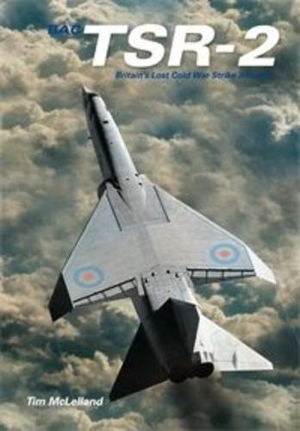
PublishedClassic Publications, November 2010 |
ISBN9781906537197 |
FormatHardcover, 96 pages |
Dimensions28cm × 21.5cm × 1.5cm |
A detailed yet eminently readable photographic history of the development of the TSR-2, with photographs drawn from the BAE Systems Heritage archive at Warton. It will concentrate on the aircraft development rather than the political background to the story.
The author has researched original sources from the BAe archives at Warton Heritage Group, and uses a compelling array of unpublished photographs and material to illustrate the story. This new book will have a wide appeal and will revive the debate about this beautiful but ill-fated aircraft. Although various proposals, under the designation OR (Operational Requirement) 343, were considered for a replacement of the existing Canberra bomber, in 1959 the go-ahead was given to the British Aircraft Corporation submission, named the TSR.2. This stood for Tactical Strike and Reconnaissance 2. As is often the case, the original estimates for the TSR.2 were overtaken by rocketing costs. Two prototype aircraft were completed and the first test flight was made on 27 September 1964 with Roland Beamont at the controls. In the course of testing, the TSR.2 was found to meet easily the demanding performance specification.
Aerodynamically the aircraft was trouble-free, though there were continual problems with the engines and the undercarriage. By now, some in the RAF were coming to favour the American General Dynamics F-111 over the TSR.2. The new Labour government, which came to power in 1964, at first denied that it was going to drop the British aircraft but in the budget speech of 6 April 1965, the Chancellor announced the cancellation of the TSR.2 in favour of the F-111 on the grounds that the American aircraft would prove cheaper. Subsequently, this decision was used to berate the Labour government by those of an opposite political persuasion who always found it difficult to accept that Britain was no longer the force in world affairs it once had been. The fate of the TSR.2 was seen by some as a metaphor for the decline of Britain itself. This view was reinforced by the famous aircraft designer Sir Sidney Camm, who said, 'all modern aircraft have four dimensions: span, length, height and politics. TSR.2 simply got the first three right.' Although only flown as a prototype, the TSR.2 has become a perennially popular and controversial subject.
This book will provide an in-depth and balanced view of the project.

